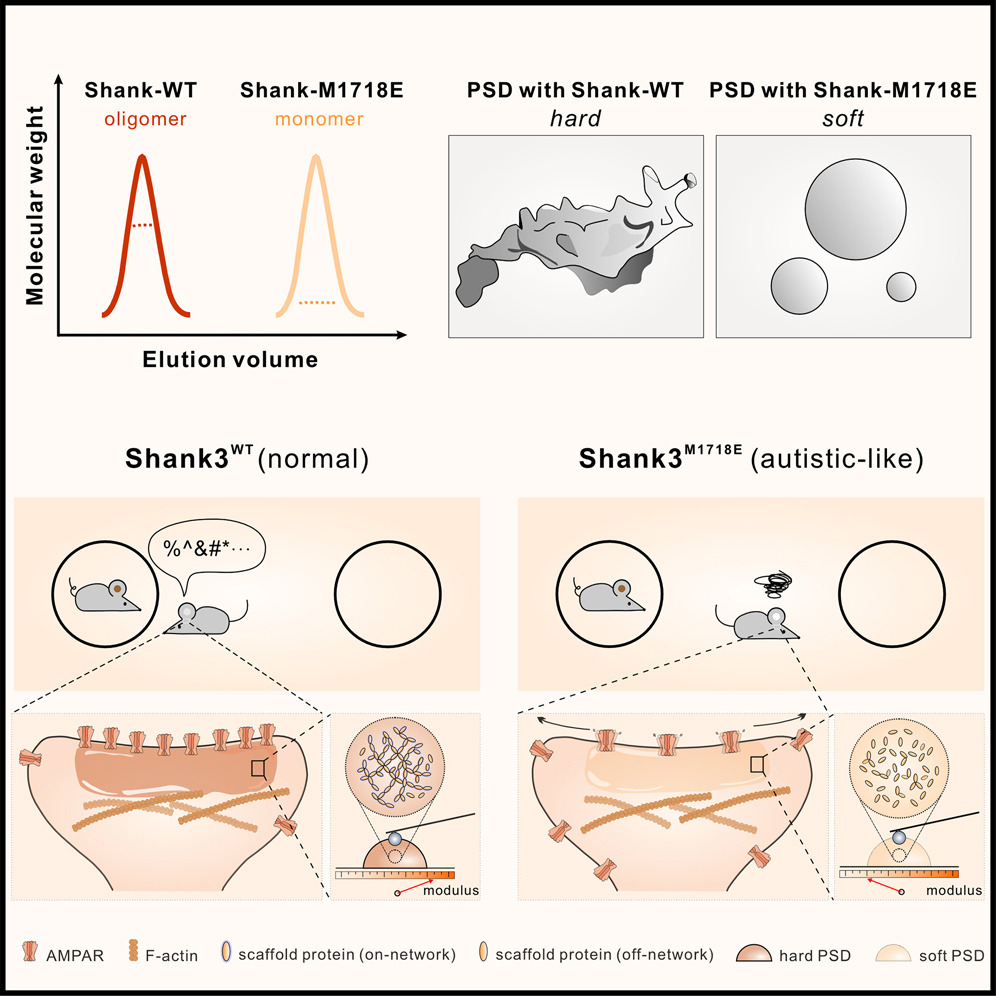CaMKIIα-driven, phosphatase-checked postsynaptic plasticity via phase separation
2020.11.24Cai, Q., Zeng, M., Wu, X., Wu, H., Zhan, Y., Tian, R., & Zhang, M. (2021). Cell Research, 31(1), 37-51.
Ca2+/calmodulin-dependent kinase IIα (CaMKIIα) is essential for synaptic plasticity and learning by decoding synaptic Ca2+ oscillations. Despite decades of extensive research, new mechanisms underlying CaMKIIα’s function in synapses are still being discovered. Here, we discover that Shank3 is a specific binding partner for autoinhibited CaMKIIα. We demonstrate that Shank3 and GluN2B, via combined actions of Ca2+ and phosphatases, reciprocally bind to CaMKIIα. Under basal condition, CaMKIIα is recruited to the Shank3 subcompartment of postsynaptic density (PSD) via phase separation. Rise of Ca2+ concentration induces GluN2B-mediated recruitment of active CaMKIIα and formation of the CaMKIIα/GluN2B/PSD-95 condensates, which are autonomously dispersed upon Ca2+ removal. Protein phosphatases control the Ca2+-dependent shuttling of CaMKIIα between the two PSD subcompartments and PSD condensate formation. Activation of CaMKIIα further enlarges the PSD assembly and induces structural LTP. Thus, Ca2+-induced and phosphatase-checked shuttling of CaMKIIα between distinct PSD nano-domains can regulate phase separation-mediated PSD assembly and synaptic plasticity.
- Recommend
-
2025-10-22
IQSEC2/BRAG1 may modulate postsynaptic density assembly through Ca2+-induced phase separation.
-
2025-08-22

Shank3 oligomerization governs material properties of the postsynaptic density condensate and synaptic plasticity.
-
2025-08-21
Modulating synaptic glutamate receptors by targeting network nodes of the postsynaptic density condensate.
-
2025-08-19
Current practices in the study of biomolecular condensates: a community comment.
-
2025-06-10
Phase separation instead of binding strength determines target specificities of MAGUKs.

